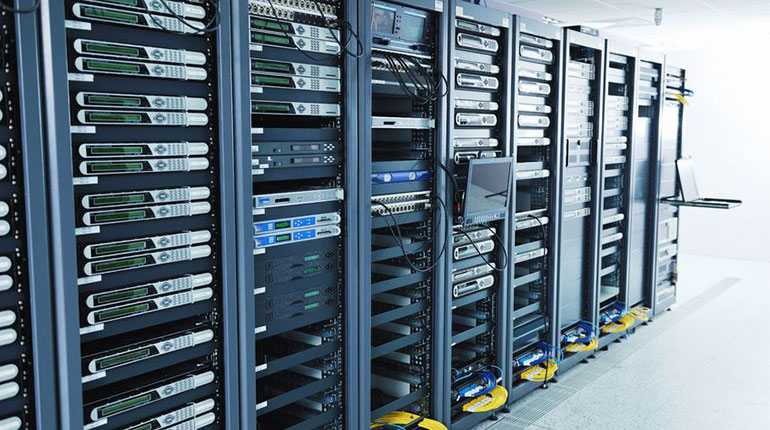Businesses are under constant pressure to streamline operations and reduce costs. Fortunately, IT infrastructure offers a great opportunity to achieve both. However, in-house servers, networking, and cooling system management require a lot of resources and can often prove inefficient. As a result, data centers, especially colocation facilities, can be a cost-effective solution in this situation. Organizations can reduce costs and gain improved security, uptime, and scalability by moving their physical infrastructure to a data center.
What is colocation, and what is a data center?
A data center houses computer systems and related components such as storage and telecommunications equipment. Providers build these centers for peak performance by using innovative cooling, power redundancy, and robust security.
Instead of keeping your company’s servers and networking hardware onsite, colocation involves putting them in a third-party data center. While you maintain control over your hardware, the data center supplies the space, power, cooling, bandwidth, and physical security.
Businesses increasingly demand scalable and affordable IT solutions. As a result, MarketsandMarkets projects the global colocation market will reach $62.3 billion by 2027.
How a Data Center Reduces IT Costs
Eliminates the Need for Building and Maintaining In-House Infrastructure
There are significant upfront and ongoing operating costs associated with running a server room or data center onsite. These consist of:
- Investing in and maintaining storage systems and servers
- Setting up fire suppression and cooling systems
- Covering the cost of uninterrupted power supply (UPS) systems
- Maintaining access control and physical security
- Dedicating and managing physical space within the building
When your company chooses colocation, the data center provider covers the infrastructure costs. Instead of building your own infrastructure, you rent rack units or cabinets. This lowers capital expenses (CapEx) and stabilizes operating costs (OpEx).
Reduces Staffing and Maintenance Burden
Operating in-house infrastructure means hiring IT personnel. They manage power and cooling, monitor hardware, and troubleshoot issues around the clock. In a colocation model, skilled technicians from the data center provider handle many of these responsibilities.
Your team still oversees your servers, but they do not have to worry about:
- Maintaining HVAC systems
- Taking care of physical security
- Controlling backup power sources
- Testing the fire system
With fewer specialized staff needed, your IT team can focus on core goals like software development, security, and digital transformation.
Improves Energy Efficiency and Cuts Utility Costs
Colocation providers leverage advanced technologies to monitor and measure energy usage in real time. This allows them to significantly reduce overall consumption. These monitoring systems track the power usage of critical infrastructure components, including power distribution units (PDUs), cooling systems, and servers. By continuously collecting and analyzing this data, providers can evaluate system performance and identify opportunities for greater energy efficiency.
Real-time energy data helps colocation providers detect high-consumption operations and inefficiencies quickly. With this information, providers can take targeted steps to reduce energy use. These include adjusting temperature settings, maximizing server efficiency, and upgrading to more energy-efficient equipment.
This method helps reduce unnecessary energy consumption. Additionally, it ensures the entire infrastructure operates as efficiently as possible. Both the provider and the companies that share the facility benefit from lower utility costs due to these optimizations. Colocation providers support customers in achieving a more economical and sustainable IT environment by focusing on proactive improvements and continuous monitoring.
Reduces Downtime and Associated Costs
The cost of downtime is high. The average cost of IT outages, according to Information Technology Intelligence Consulting (ITIC), is over $300,000 per hour.
Colocation companies make significant investments in redundancy:
- Backup generators and several power sources
- Redundant connections to the network
- Tier III or Tier IV reliability certifications
- Round-the-clock oversight and assistance
Replicating this level of uptime internally is costly and challenging. Colocation reduces lost revenue and reputational harm from unplanned outages. At the same time, it provides enterprise-grade reliability at a fraction of the price.
Enables Scalable Growth Without Costly Overhead
As businesses expand, so do their IT requirements. Scaling in-house infrastructure typically requires purchasing additional hardware. It also involves increasing physical space to accommodate new equipment. In many cases, businesses must navigate construction or permitting challenges to support this growth.
Colocation allows businesses to scale up or down based on demand. They can add rack space, bandwidth, or power as needed, all without making large upfront infrastructure investments.
This flexibility helps them avoid overprovisioning or investing in hardware that may sit unused for months. Additionally, it speeds up the time it takes for new services or applications to reach the market.
Cut Costs and Gain Control with Colocation
Colocation services provide an effective way to cut IT expenses without sacrificing infrastructure control. By using a professional data center’s capability, companies can:
- Avoid large capital expenditures.
- Reduced energy and maintenance expenses over time
- Increase dependability and uptime
- Easily scale as needs evolve
- Cut down on IT expenses and staffing needs
Learn more about how SMS Datacenter can help your business become more efficient and reduce costs. Contact us today at [email protected] or 949-223-9220.

